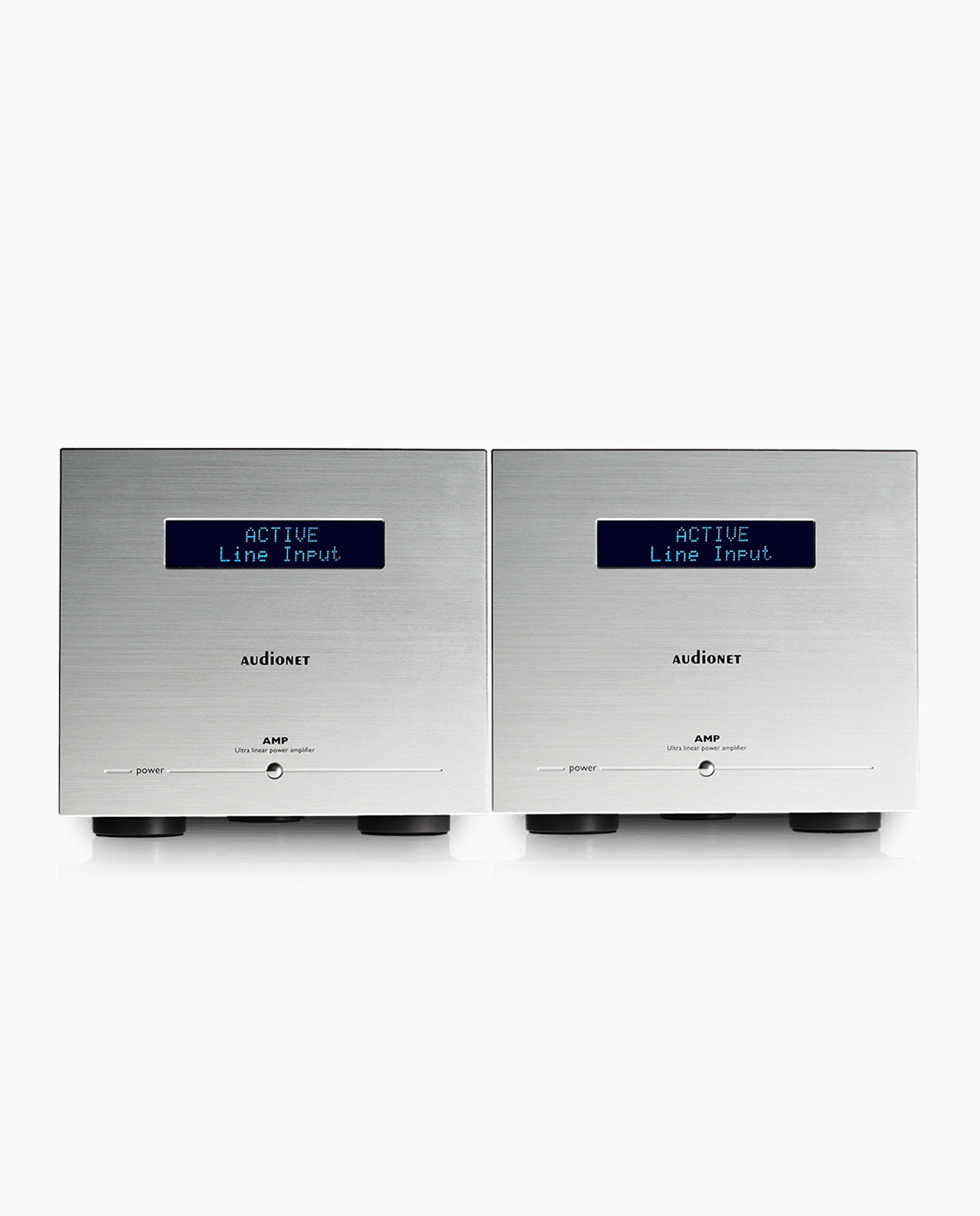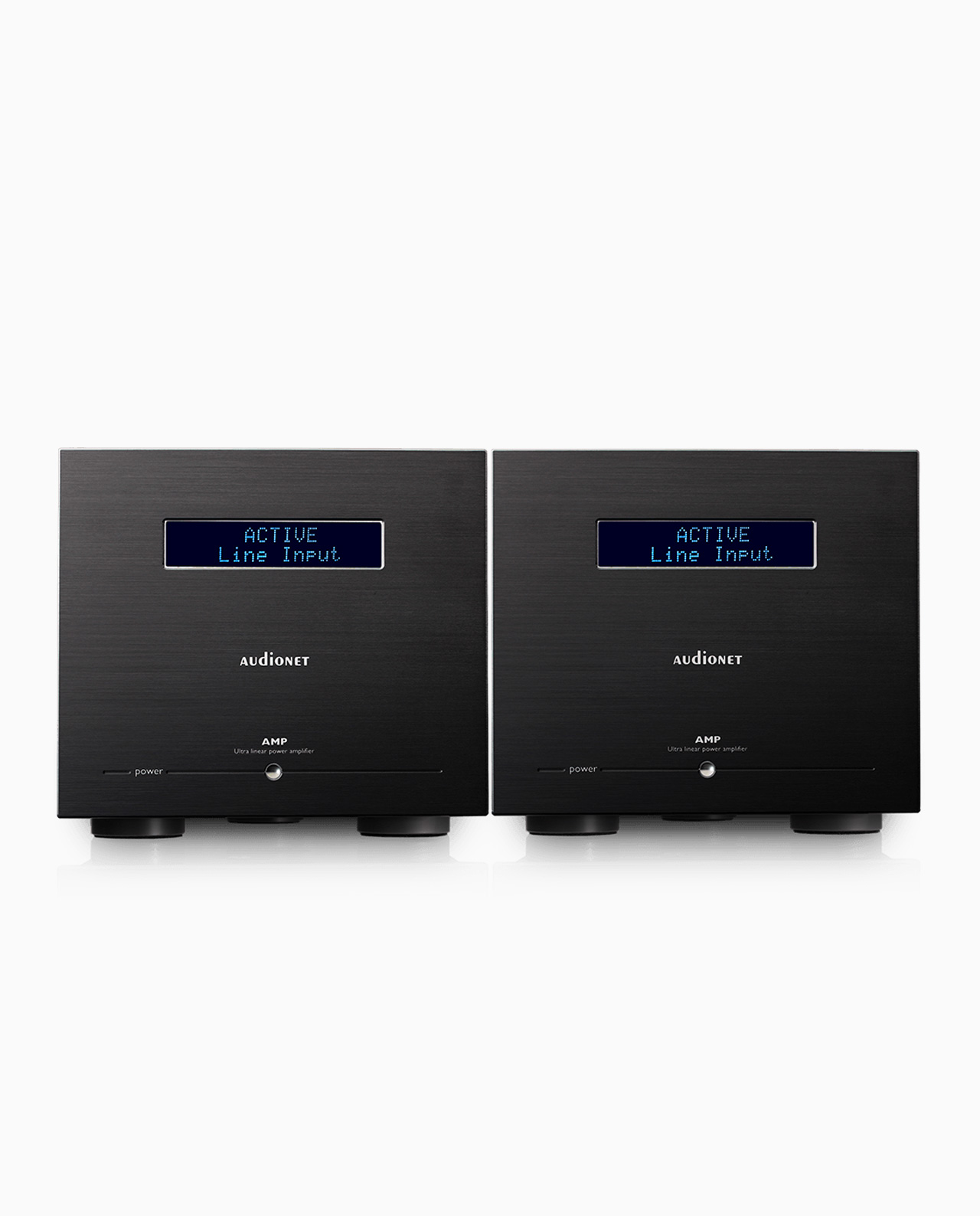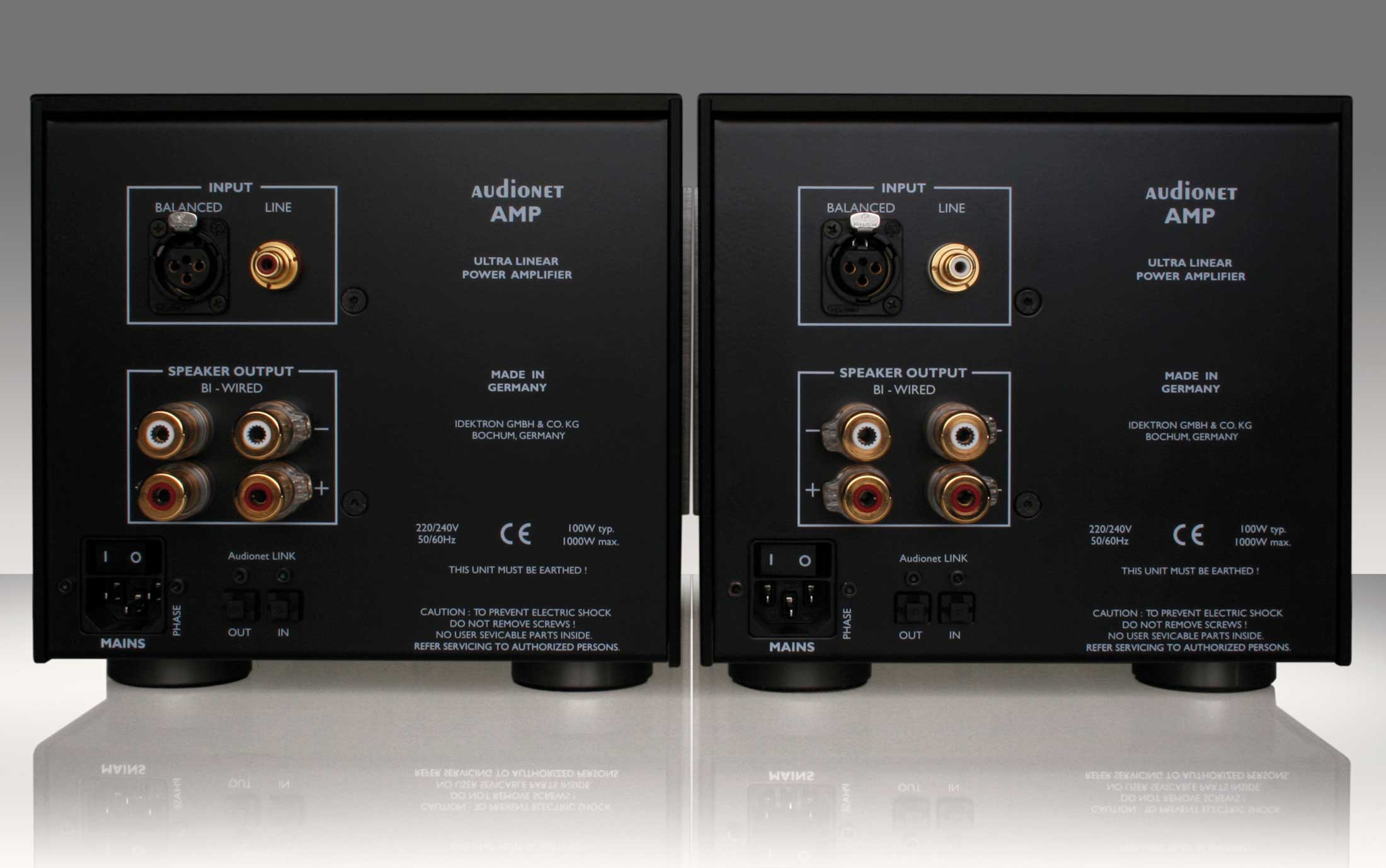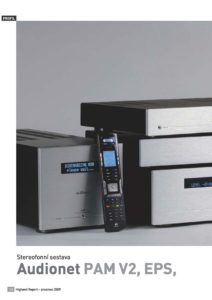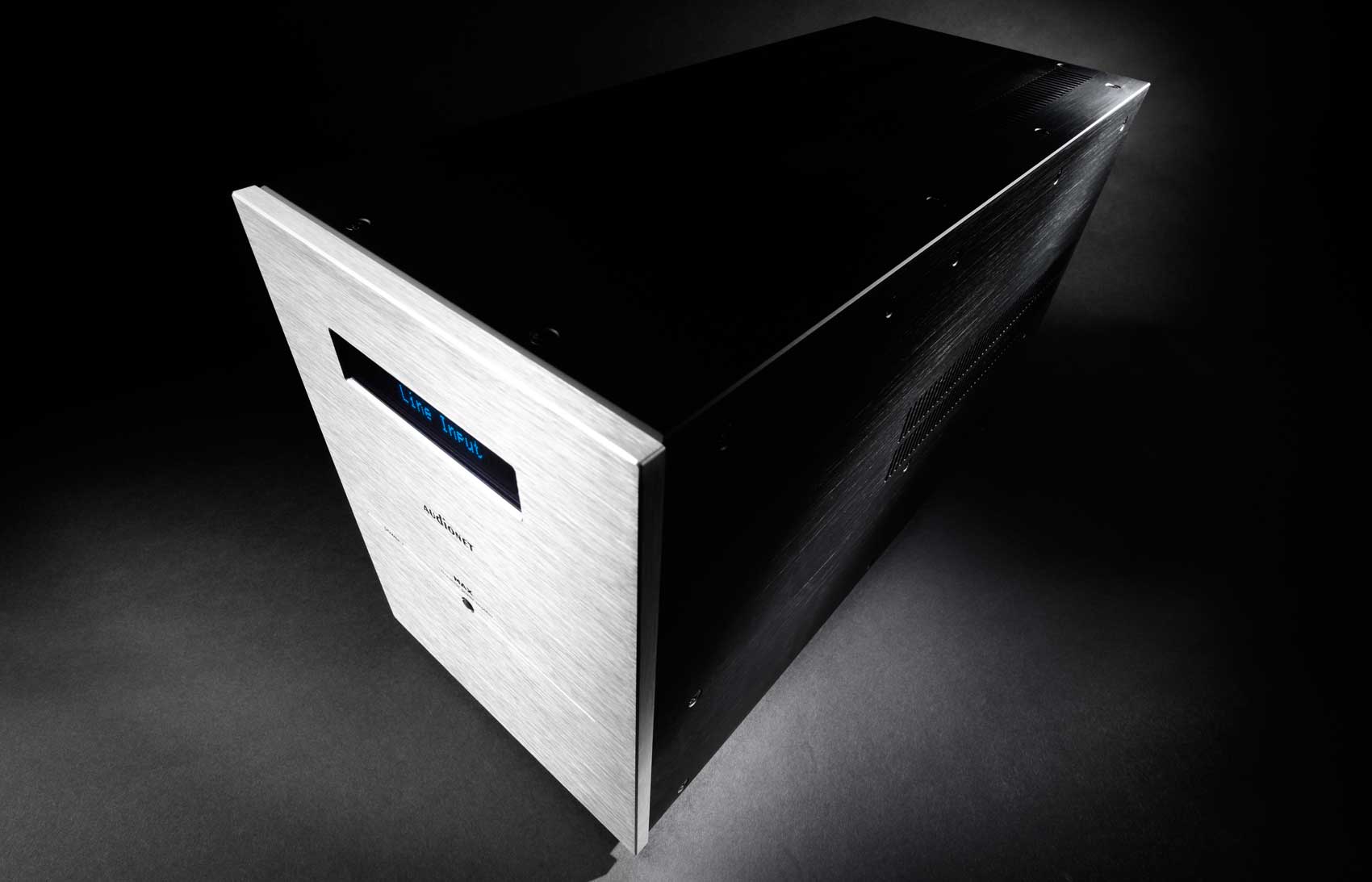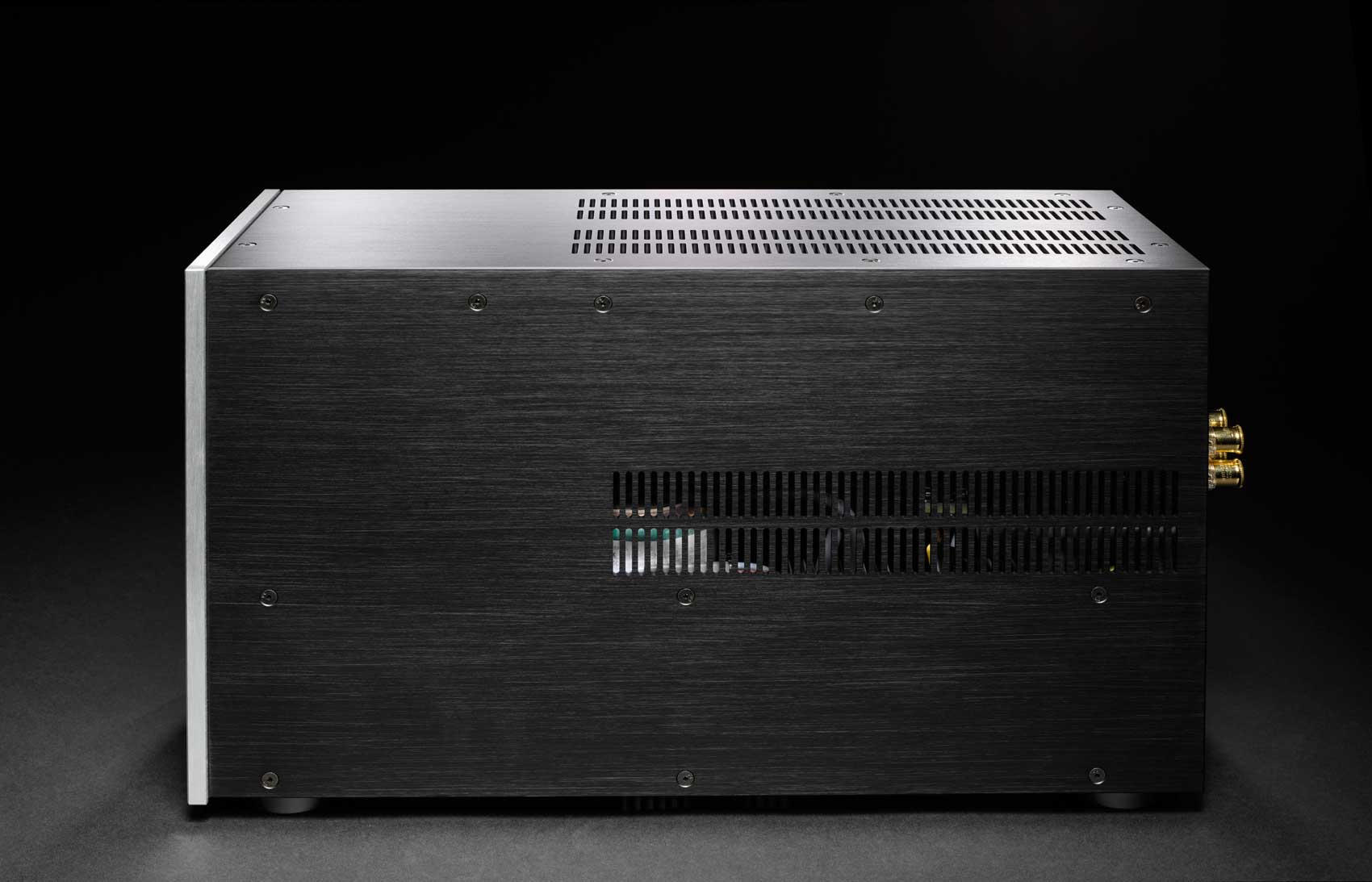In order to guarantee absolute channel separation, the AMP pair is designed as mono amplifiers. The powerful, extremely stable performance of the AMP ensures interference-free operation even in extreme range.
The magnetically and capacitatively optimized assembly of the mono-blocks largely eliminates both feedback from electrical interference rays as well as reciprocal influences between the amplification channels during the amplification process. In order to optimize the high-frequency attributes and the velocity attained by the AMPs, miniaturization techniques were consistently deployed. The remaining signal paths have been kept to a minimum, and contain no sound-impairing components such as coils, chokes or relays.
The AMPs are equipped with RCA and XLR inputs, which are electronically switched via gold-plated precision relays. The input stage is configured as double-differential amplifier with a low-noise, monolithic dual FET, thus making the end amplifiers electrically independent of the input signal and avoiding harmful interaction with the power source.
The input stage is separately powered by an 80 VA toroid-core transformer. With a gain-bandwidth product exceeding one Gigahertz, it is additionally decoupled from the power stages by double bootstrapping. The output stage is equipped with six power MOSFETs with actively controlled bias current amounting to 0.6 A. Thanks to a unique and highly elaborated correction stage, distortions are linearized locally in real time; the negligible level of total distortion is scarcely detectable, even with the most sophisticated measuring methods. The supply voltages are stabilized as rapidly as possible by optimized discrete MOSFET regulators, whose basic supply comes from an encapsulated 850-VA toroid-core transformer and two special, fast and impulse-resistant high-current capacitors with total filtering capacity amounting to 188,000 µF.
A microprocessor unit controls all functions and permanently monitors DC, HF, temperature and overload, and disconnects the AMP from the mains supply in the case of faults. A large, two-line display indicates fault sources in plain language. Remote activation is possible optically via Audionet-Link as well as signal-dependently in three sensitivity ranges. The control unit is separately supplied by a transformer.


